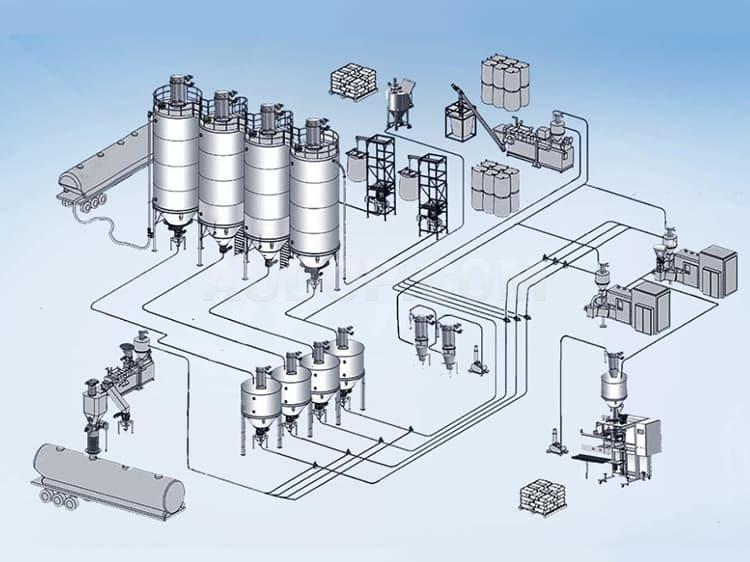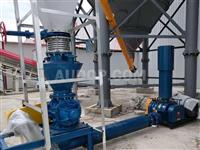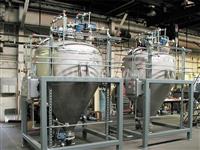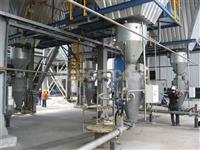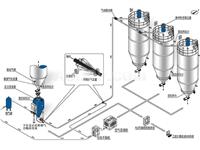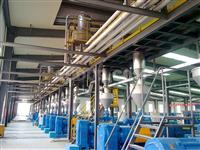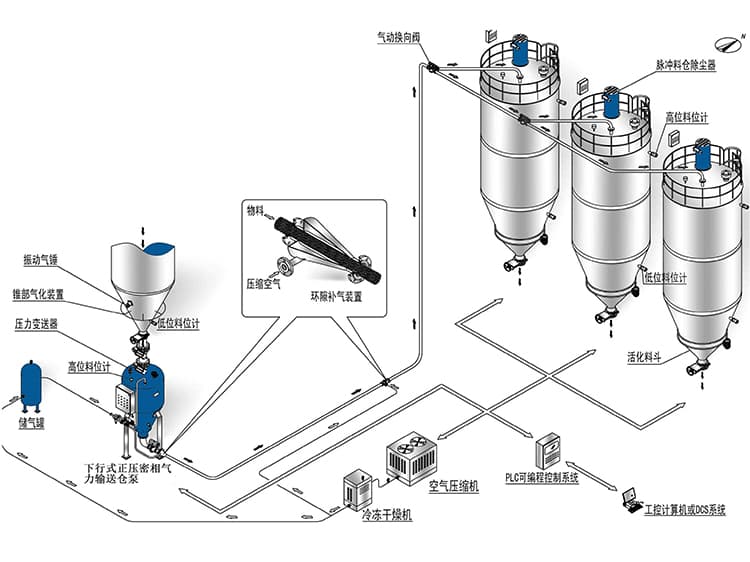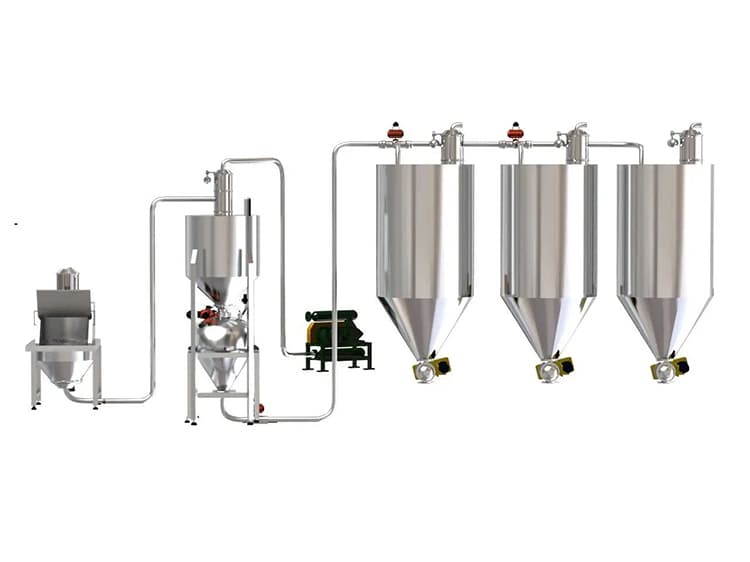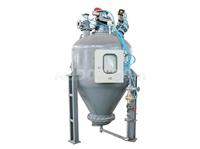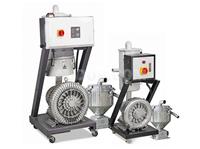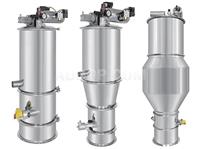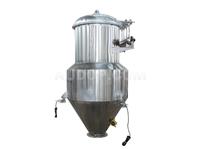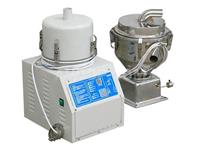Positive Pressure Conveying System
- The positive pressure conveying system is convenient for installing branch pipelines, which can convey materials to multiple places at the same time, with high production efficiency.
- The air leakage position of the positive pressure conveying system is easy to find, and the dust removal requirement for air is not high.
- The system has small conveying resistance and less wear on the pipeline.
- The positive pressure conveying system has a long conveying distance, which can reach more than 1000m.
- Air supplement pipes can be installed inside and outside the conveying pipeline, and air supplement and blockage removal can be carried out in a variety of ways.
Overview
The positive pressure conveying system is composed of roots blowers, manual gate valves, rotary feeding devices, conveying pipelines, pipeline diverter valves, as well as storage bins, top - of - bin dust removal devices, electrical control systems and related auxiliary equipment.It adopts the pneumatic conveying method to transport materials. The conveying pipelines can be arranged according to the specific terrain, realizing centralized, decentralized, large - height and long - distance conveying. The conveying process is not affected by climatic conditions, which can ensure that materials are not damp, conducive to production and environmental protection, and has the characteristics of high efficiency, energy conservation and environmental protection.The positive pressure conveying system is widely used in the power, metallurgy, petrochemical, plastic, food, building materials and hydropower industries.
The positive pressure conveying system is a way of conveying materials by using positive pressure gas. It is also called the pressure - feeding conveying system. During pressure - feeding pneumatic conveying, gas is input into the feeder to mix air and materials. The mixed gas and materials pass through the separator, where the materials and gas are separated. The gas is discharged into the air after passing through the dust removal device, and the materials are deposited into the silo.The positive pressure conveying system has the characteristics of simple system, flexible layout, reliable operation, high degree of automation, low system investment, high ash - gas ratio in conveying, low flow rate, strong wear resistance, small maintenance workload and low annual operation cost.
Working principle of Positive Pressure Conveying System:
The positive pressure conveying equipment uses gas with a pressure lower than 0.1MPa (usually air or nitrogen) to blow materials to a designated position at a relatively high speed, and the gas - solid ratio is generally 1 to 10.The initial speed of the system is generally more than 12m/s, the terminal speed can be as high as 35m/s, the terminal pressure is basically close to the atmospheric pressure. The power is generally provided by roots blowers, and multi - point feeding and multi - point discharging can be realized through valve control.Sometimes it can also be used in combination with negative pressure vacuum conveying to meet special requirements.
The positive pressure conveying system usually uses roots blowers to provide air source. When the system works, the roots blowers are started to generate high - pressure columnar air flow. The high - pressure columnar air flow passes through the jet pump, and a negative pressure is generated inside, so that the materials supplied by the rotary feeder are timely sucked into the injection port of the ejector.The materials are transported to the storage bin through the conveying pipeline.Then, the top - of - bin dust remover installed on the top of the storage bin separates the materials from the conveying air flow, and the remaining air flow is discharged outdoors in a timely manner, which also avoids generating too much dust on the site.
Application fields of Air Conveying:
It is often suitable for long conveying pipeline distances and fine, granular, abrasive, non - abrasive and other difficult - to - convey materials, such as PVC powder, ternary materials, nano calcium carbonate, elastic rubber, flour, sugar alcohol, white sugar, milk powder, water - absorbing resin, lithium battery raw materials, etc. And a variety of process combinations can be realized in the middle, such as iron removal, filtration, drying, pressure maintenance, vacuum pumping, etc.
Composition of Pneumatic Conveying:
It is mainly composed of power source (fan), feeder, conveying pipe, material separator and dust remover.
- Power source: Blowers, compressors, exhaust fans or vacuum pumps, etc., which are used to generate air flow and provide energy for the entire conveying process.
- Feeder/loading machine: A kind of equipment that can mix materials with air and send them into the conveying pipe.The rationality of the feeder structure directly affects the conveying capacity, working stability and power consumption of the entire pneumatic device.
- Conveying pipe: Reasonable arrangement, selection of conveying pipe and structural size can avoid blockage of the pipeline system or reduce wear, reduce pressure loss, and have a great impact on the productivity, energy consumption and use reliability of the conveying device.
- Material separator: It can separate the conveyed materials from the air flow. The commonly used separators include centrifugal separators and volumetric separators.
- Dust remover: The gas coming out of the separator contains 5 to 40 microns of dust. The dust remover can remove the dust to prevent air pollution and fan wear.
Working process of Pressure Conveying:
- Feeding stage: The material sealing valve, airtight valve and exhaust valve are opened, and the other valves are closed. Materials fall into the bin pump under the action of gravity. When the time reaches the set value, the material sealing valve, airtight valve and exhaust valve are closed, and a feeding process is completed.
- The air inlet valve opens automatically, compressed air enters the bin pump, diffuses and passes through the fluidized bed. While the materials are fully fluidized, the air pressure in the bin pump will gradually increase.
- When the pressure of the transmitter reaches a certain value, the pressure transmitter sends a signal, the discharge valve opens automatically, the fluidization of materials on the fluidized bed is strengthened, and the conveying starts. When the materials in the bin pump gradually decrease, the pressure display gradually drops.During this process, the materials on the fluidized bed are always in a state of being fluidized while being conveyed.
- Purging stage: After the materials in the pump are conveyed, when the pressure drops to the empty pipeline resistance, the air inlet valve is closed. After a certain interval, the discharge valve is closed, the pressure boost lasts for 3 - 5 seconds to clean the pipeline, and the feed valve is opened. So far, a conveying cycle is completed.
Advantages of Pneumatic Transfer System:
- High working pressure and large conveying capacity.Therefore, long - distance and high - capacity conveying can be realized, and ultra - long - distance conveying can be realized by using a booster.
- Due to the low conveying speed of materials, there is less wear on the conveying pipeline and materials.
- High material - gas ratio, low air consumption and saving operation cost.
- It can convey from a single point to multiple points, or have multiple points for feeding and discharging, which is easy for process design.
- The system has high pressure and low air consumption.
- Small conveying air volume, and material - gas separation is easy to realize.
- High degree of automation. During the conveying process, the processes of metering and batching, screening, mixing, iron removal and impurity removal can be realized at the same time to meet your production needs.
- Conveying in a fully closed pipeline, environmentally friendly and pollution-free.
- Stable and reliable operation, no leakage and no dust emission.
- Modular design makes maintenance simpler and more convenient.
Technical Parameters
Technical Parameters
This series of products are highly customized according to the customers' requirements. Therefore, we are unable to provide the procedures and parameters at present. If you are interested in this series of products, please contact us immediately. Audop Company will assign experienced engineers to communicate with you as soon as possible.
Your requirements are the basis for our development and a daily challenge to bring to fruition, please do not hesitate to inquiry us.
Pneumatic Conveying Pump
- High Energy Efficiency: Due to the reasonable fluidization structure, the material fluidization state is good, and the air consumption is significantly lower than that of similar products. After years of production and research, our company has improved the fluidization structure for many times, which greatly improves production efficiency and reduces energy consumption, helping users save operating costs.
- High Material-Gas Ratio: With good fluidization effect and low air consumption, the material-gas ratio is naturally high. Through laboratory tests, when the equivalent distance is within 500 meters, the material-gas ratio can reach more than 30Kg (ash)/Kg (gas), ensuring efficient material conveying.
- Low Material Flow Rate: The material flow rate during conveying is low, which results in small wear of the equipment's valves and pipelines and long service life of vulnerable parts, reducing the frequency of equipment maintenance and replacement.
- Strong Adjustment Function: It has various adjustment methods such as primary and secondary air intake adjustment, which can make the system operate under the optimal air consumption ratio and excellent fluidization state, adapting to different material conveying conditions.
- Unique Blockage Removal Method: It adopts a back-suction blockage removal method, which is simple, easy to implement and reasonable in operation. It only needs to lead the material-gas mixture to the silo or flue inlet through the blockage removal valve and pipeline, ensuring smooth operation of the conveying system.
- Easy Solution for Supporting Facilities: Due to low air consumption and low speed, the silo material-gas separation and filtration equipment can be smaller than that equipped with general bin-type pumps, and the air pollution caused is also small, meeting environmental protection requirements.
- Small Energy Consumption Coefficient: The energy consumption coefficient of the bin-type pump conveying system is below 65KW.h/t.m, which is more energy-saving compared with similar conveying systems.
- High Degree of Automation: It adopts a programmable (PLC) control system, and the entire working process can be fully automated. The system can be set to automatic or manual operation mode. The main control cabinet is installed in the system control room, reducing manual operation intensity and improving operation accuracy.
High-Power Vacuum Loader
- High-Power Vacuum Loader is a model specially developed for scenarios with large material consumption, catering to the high-volume material needs of industrial production.
- The motor power, feeding pipe diameter and hopper capacity all adopt enlarged configurations to meet the material handling requirements of large-scale industrial operations.
- Equipped with microcomputer control, it provides material shortage and overload alarms, ensuring safe and reliable operation of the material conveying system.
- It has a small size, occupies little space and features flexible operation, making it easy to integrate into different industrial production line layouts.
- Customizable one-machine multi-hopper type vacuum loaders are available to meet the diverse material conveying needs of different industrial production lines.
Electric Vacuum Feeder
- The power source of the whole set of equipment is compressed air, and no power supply is used;
- The equipment is easy and simple to disassemble and clean;
- The equipment operates with very low noise and does not generate heat or oil pollution;
- The powder conveying process is carried out in a closed environment, without dust leakage.
Vacuum Feeder
- Simple and automatic control, with arbitrary setting of suction time, easy and convenient operation.
- Hygienic closed conveying, no dust leakage, no cross-contamination, in line with GMP standards, and sterile equipment can be provided.
- It occupies a small space, can complete the conveying of powders in narrow spaces, makes the working space neat and elegant, and is not limited by the length of the distance.
- Clean and dust-free operation, no dead ends, and quick and convenient disassembly, assembly, cleaning, and material change.
- Economical: One machine can be used for multiple sets of equipment in turn, with high efficiency and energy saving, no need for warm-up and standby, and low operation and maintenance costs.
Split-Type Vacuum Loader
- The split-type vacuum loader is equipped with a stainless steel hopper, which ensures that raw materials are not contaminated during the conveying process.
- It adopts microcomputer control, featuring easy operation and precise control. Additionally, it is equipped with multiple alarm indicator lights to promptly remind operators of equipment status.
- The motor protection device of the split-type vacuum loader can extend its service life. The material shortage alarm can proactively notify customers to resolve the issue in a timely manner.
- It is equipped with an independent filter device for easy removal of accumulated dust; the filter inspection window allows customers to check the usage status of the filter and perform regular cleaning, ensuring the equipment's stable operation.
- The vacuum hopper (YMH) of the split-type vacuum loader can be directly installed on the hopper of the molding machine; the electric eye hopper (YVH) can be directly installed at the feed inlet of the molding machine, facilitating integration with production lines.
- A cyclone dust collector can be optionally configured for the split-type vacuum loader, which reduces the frequency of filter cleaning and is suitable for crushed material conveying.
- The YPV-U European-style two-material proportional valve (including an optional control box) can be optionally configured for the split-type vacuum loader, which is used for mixed use of new materials and crushed materials or immediate recycling of crushed materials.
- When crushed materials account for more than 30% of the conveyed raw materials, it is recommended to select a 14-mesh stainless steel filter screen for the split-type vacuum loader to ensure smooth conveying.
